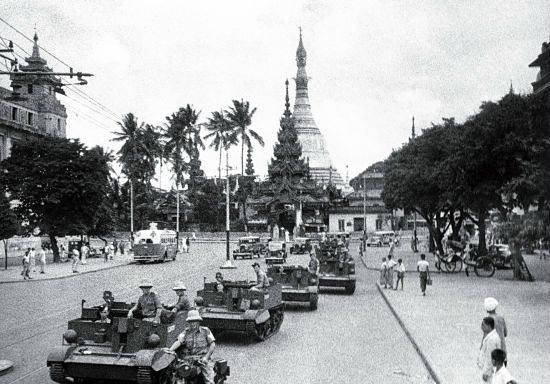
8 March 1942
The last attempt to defend Rangoon
In February 1942 Rangoon was in near chaos, with hundreds of thousands of refugees fleeing the heavily bombed downtown area and dockyards. Electricity lines were severely damaged and food supplies were running short. By 15 February, Singapore had fallen to the Japanese. On 17 February, the Australian government under Prime Minister John Curtin refused Sir Winston Churchill’s directive to divert the 6th and 7th (Australian) Divisions to the defence of Rangoon.
Meanwhile, the Japanese 15th Army continued to advance north from Moulmein. The 17th India Division (the “Black Cat” Division) had been tasked with halting the advance at the Sittang River but met with disaster. On 22 February, the Black Cat Division (a mixed force of Gurkha, British, and Indian regiments) was soundly defeated by the Japanese at the Battle of Sittang Bridge.
The entire rest of the country was defended by only one other division: the 1st Burma Division, headquartered at Toungoo, with two brigades of Burma Rifles and one brigade of mainly Punjabi and Rajput infantry.
Reinforcements came in the form of the 7th Armoured Brigade (the “Desert Rats”), which arrived in Rangoon in February from North Africa where it had been part of key battles against Nazi Germany. The Desert Rats were a last-minute attempt to stem the tide of the Japanese advance. But, with the defeat of the Black Cat Division at Sittang, there was little that could be done to prevent the capture of Rangoon. Tasked with defending the city, the Desert Rats would instead end up covering the British retreat north to India. Rangoon fell to the Japanese on 8 March 1942.
The photograph shows the British 7th Armoured Brigade (the “Desert Rats”) patrolling Sule Pagoda Road in a last-ditch attempt to protect the capital.